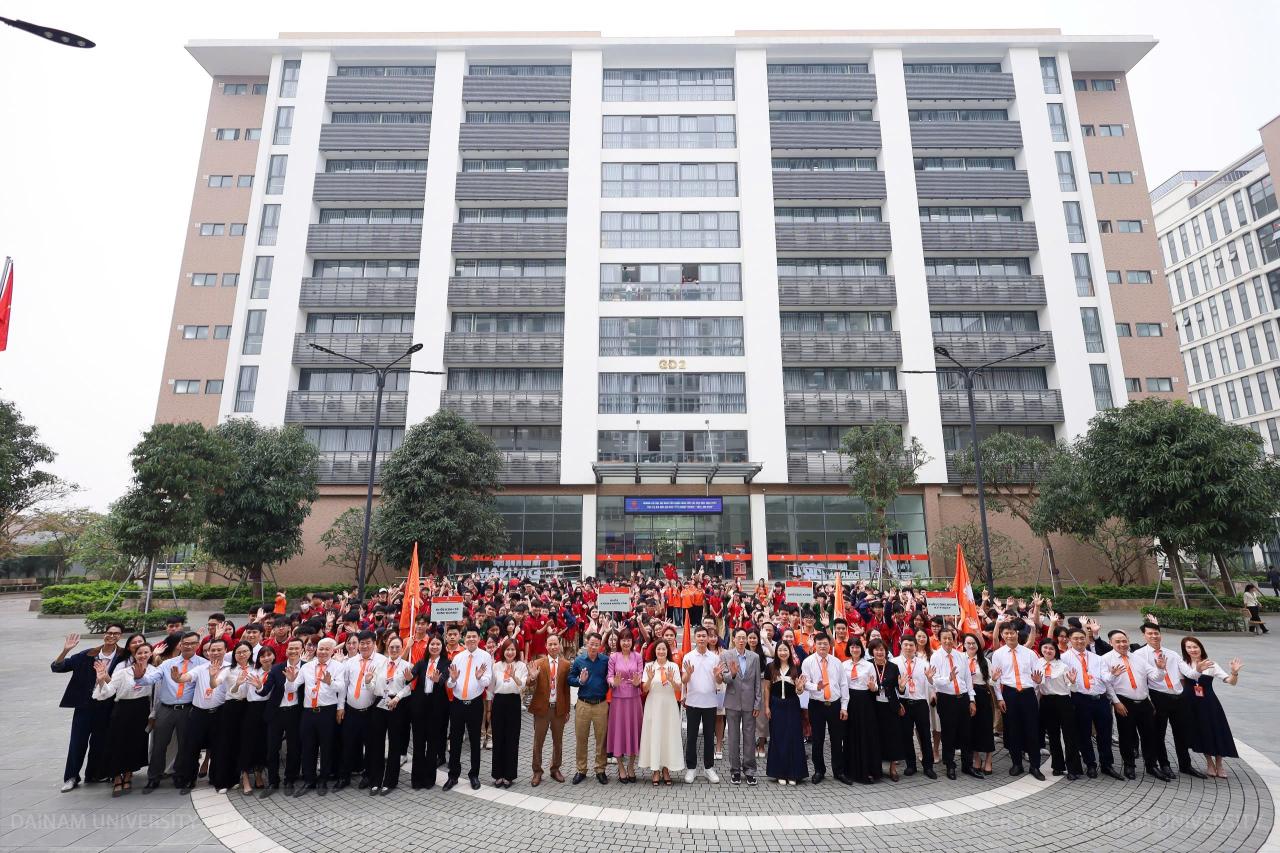Civil construction in life
Posted date 29/03/2018
1.866 view

Since ancient times, humans have known how to take advantage of nature and transform it to serve their lives. From using caves as shelters to building mud-walled houses with thatched roofs to live in, stone walls to prevent enemies...
MSc. Nguyen Dinh Khoa
Since ancient times, people have known how to take advantage of nature and transform nature to serve their lives. From using caves as shelters to building mud-walled houses with thatched roofs to live in, stone walls to prevent enemies... Nowadays, construction works are increasingly developed, not only serving the needs of living and fighting against enemy attacks but also serving the needs of entertainment, some works have become symbols of the city...
Since ancient times, people have known how to take advantage of nature and transform nature to serve their lives. From using caves as shelters to building mud-walled houses with thatched roofs to live in, stone walls to prevent enemies... Nowadays, construction works are increasingly developed, not only serving the needs of living and fighting against enemy attacks but also serving the needs of entertainment, some works have become symbols of the city...
.png)
Construction works today are very rich and diverse. From works serving national defense and security to civil works and social security. The division of groups of works is based on the functions and tasks of the works. From there, terms such as civil construction works, traffic works or irrigation works... were born. Such division is only relative, because the project itself is a synthesis of many different works including the entire technical infrastructure, traffic and communication, electrical systems, air conditioning and ventilation, water supply and drainage...
The Ministry of Construction has issued QCVN 03:2012/BXD, Circular 03/2016/TT-BXD dated March 10, 2016 to regulate the classification of construction works, classification of construction works and guidance on application in the management of construction investment activities. Accordingly, civil construction works are works serving the daily life of people including houses, educational, sports, cultural works, administrative headquarters, offices, markets, supermarkets, train stations, etc. The works are divided into different levels (from level IV to level I and special level) to serve the state management process. The level of works is determined according to each type of work, based on the importance, scale, technical construction requirements, life of the work and the level of safety for people and property in that work. Construction level is determined for each construction (or each construction item) of a construction project.
The Ministry of Construction has issued QCVN 03:2012/BXD, Circular 03/2016/TT-BXD dated March 10, 2016 to regulate the classification of construction works, classification of construction works and guidance on application in the management of construction investment activities. Accordingly, civil construction works are works serving the daily life of people including houses, educational, sports, cultural works, administrative headquarters, offices, markets, supermarkets, train stations, etc. The works are divided into different levels (from level IV to level I and special level) to serve the state management process. The level of works is determined according to each type of work, based on the importance, scale, technical construction requirements, life of the work and the level of safety for people and property in that work. Construction level is determined for each construction (or each construction item) of a construction project.
.png)
.png)
The types of individual housing are very rich and diverse, depending on each region and period. The type of apartment buildings has also changed a lot over time. At first, there were collective houses where households lived together. Next, they moved to buildings under 6 floors and divided into many small apartments, the apartments shared corridors and stairs (but there were no elevators). Currently, high-rise buildings are springing up to meet the needs of people with solid structures and convenient services.
Regarding the type of public works: this is the type of works that serve a certain need of people such as studying, medical examination and treatment, traveling, culture, sports... Depending on the function and task, each work has a different form. From the arrangement of rooms, space in each room to the surrounding landscape. For example, educational works, kindergartens must be arranged differently from primary schools or higher levels. In kindergartens, classes for different ages are also arranged differently.
When classifying civil works, the following requirements should be noted:
* Housing
When classifying housing, the level of danger to human safety and the ability to escape in case of an accident must be taken into account.
Apartment buildings are classified as houses in fire hazard group F1.3. Individual houses are in fire hazard group F1.4. Requirements on fire hazard according to function are specified in QCVN 06:2010/BXD.
For apartment buildings up to 25 floors, they must be built with a construction level not lower than level II. Apartment buildings over 25 floors (over 75 m) must be built with a construction level not lower than level I and the fire resistance limit of the main parts of the building must not be lower than the following values:
For individual houses, the construction level of houses with 3 floors or more must not be lower than level III.
Regarding the type of public works: this is the type of works that serve a certain need of people such as studying, medical examination and treatment, traveling, culture, sports... Depending on the function and task, each work has a different form. From the arrangement of rooms, space in each room to the surrounding landscape. For example, educational works, kindergartens must be arranged differently from primary schools or higher levels. In kindergartens, classes for different ages are also arranged differently.
When classifying civil works, the following requirements should be noted:
* Housing
When classifying housing, the level of danger to human safety and the ability to escape in case of an accident must be taken into account.
Apartment buildings are classified as houses in fire hazard group F1.3. Individual houses are in fire hazard group F1.4. Requirements on fire hazard according to function are specified in QCVN 06:2010/BXD.
For apartment buildings up to 25 floors, they must be built with a construction level not lower than level II. Apartment buildings over 25 floors (over 75 m) must be built with a construction level not lower than level I and the fire resistance limit of the main parts of the building must not be lower than the following values:
For individual houses, the construction level of houses with 3 floors or more must not be lower than level III.
.png)
* Public works
For historical relics, museums, and archive buildings, when determining the level of the building, the safety level of valuable and rare assets preserved and kept in the building must be taken into account.
- The following houses and public works must have a construction level of level I or higher:
Houses and works of international and national stature, works of special significance in terms of security, national defense and diplomacy;
Headquarters of Party agencies, National Assembly, state administrative agencies at central and provincial levels, and centrally-run cities;
Works directly serving search and rescue, emergency aid in case of natural disasters, fires, and epidemics.
For the load-bearing structure of civil works : mainly made of bricks, reinforced concrete, wood. Some works due to progress requirements, large spans can be made of steel structure, steel alloy.
In the past, well-off families often built large, luxurious wooden houses with walls made of terracotta bricks and roofs covered with tiles. Families with poor economic conditions often built wooden houses (low-quality wood) or bamboo, roofs covered with thatch or leaves, and walls covered with earth or thatch.
Nowadays, residential buildings are mainly made from reinforced concrete frames combined with brick walls to create many high-rise buildings with large spans. For buildings with spans from 8m to 12m, prestressed reinforced concrete structures are often used, while for buildings with spans greater than 12m, steel structures are often used.
For historical relics, museums, and archive buildings, when determining the level of the building, the safety level of valuable and rare assets preserved and kept in the building must be taken into account.
- The following houses and public works must have a construction level of level I or higher:
Houses and works of international and national stature, works of special significance in terms of security, national defense and diplomacy;
Headquarters of Party agencies, National Assembly, state administrative agencies at central and provincial levels, and centrally-run cities;
Works directly serving search and rescue, emergency aid in case of natural disasters, fires, and epidemics.
For the load-bearing structure of civil works : mainly made of bricks, reinforced concrete, wood. Some works due to progress requirements, large spans can be made of steel structure, steel alloy.
In the past, well-off families often built large, luxurious wooden houses with walls made of terracotta bricks and roofs covered with tiles. Families with poor economic conditions often built wooden houses (low-quality wood) or bamboo, roofs covered with thatch or leaves, and walls covered with earth or thatch.
Nowadays, residential buildings are mainly made from reinforced concrete frames combined with brick walls to create many high-rise buildings with large spans. For buildings with spans from 8m to 12m, prestressed reinforced concrete structures are often used, while for buildings with spans greater than 12m, steel structures are often used.
.png)
References
| 1 – Circular 03/2016/TT-BXD - regulations on construction works classification and instructions for application in construction investment management. |
| 2 – QCVN 03:2012/BXD - classification, grading and determination of levels of civil, industrial and urban technical infrastructure works (referred to as classification and grading of works) |
Latest article
View all Posts
Related articles
See all related Articles










